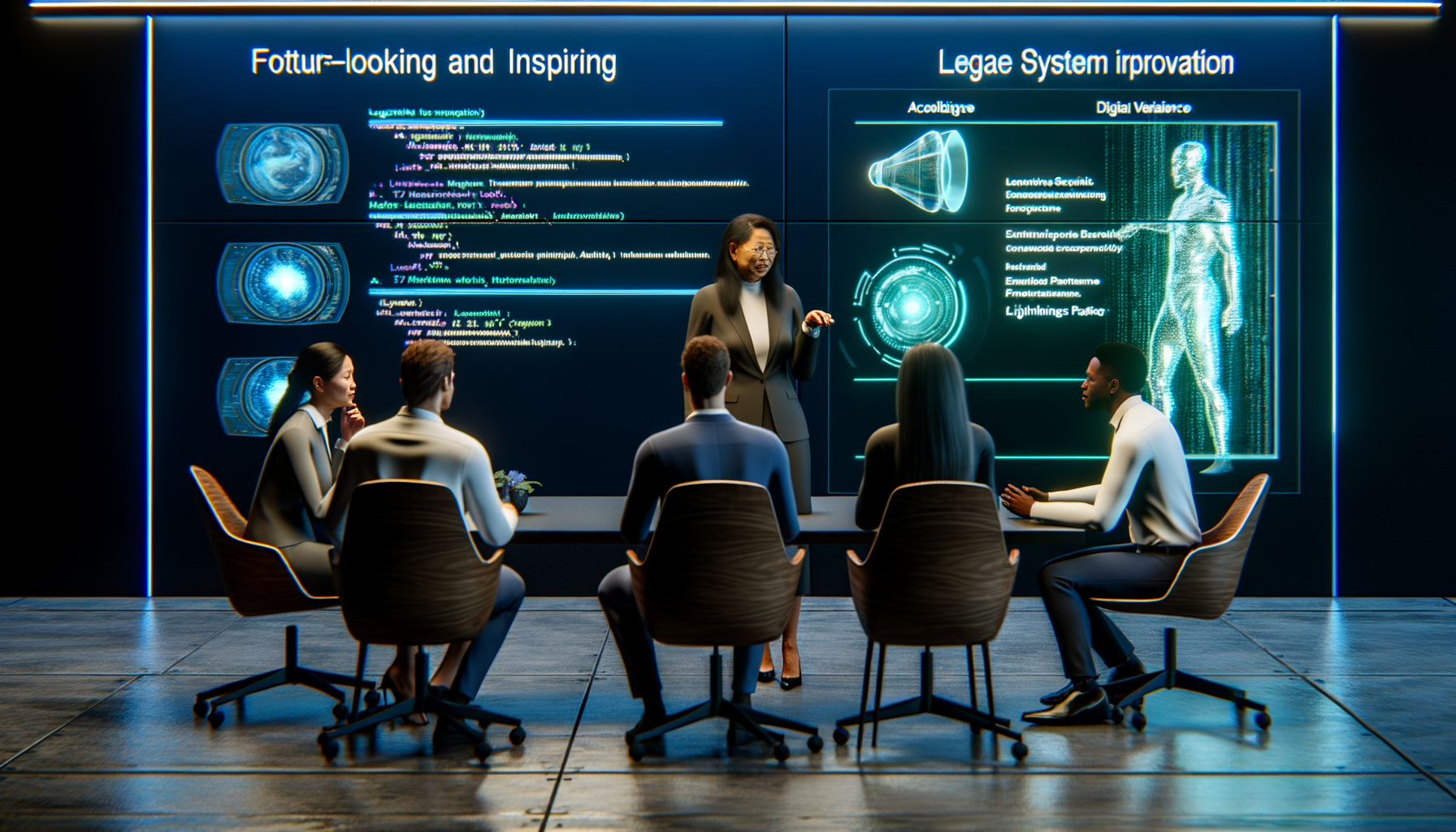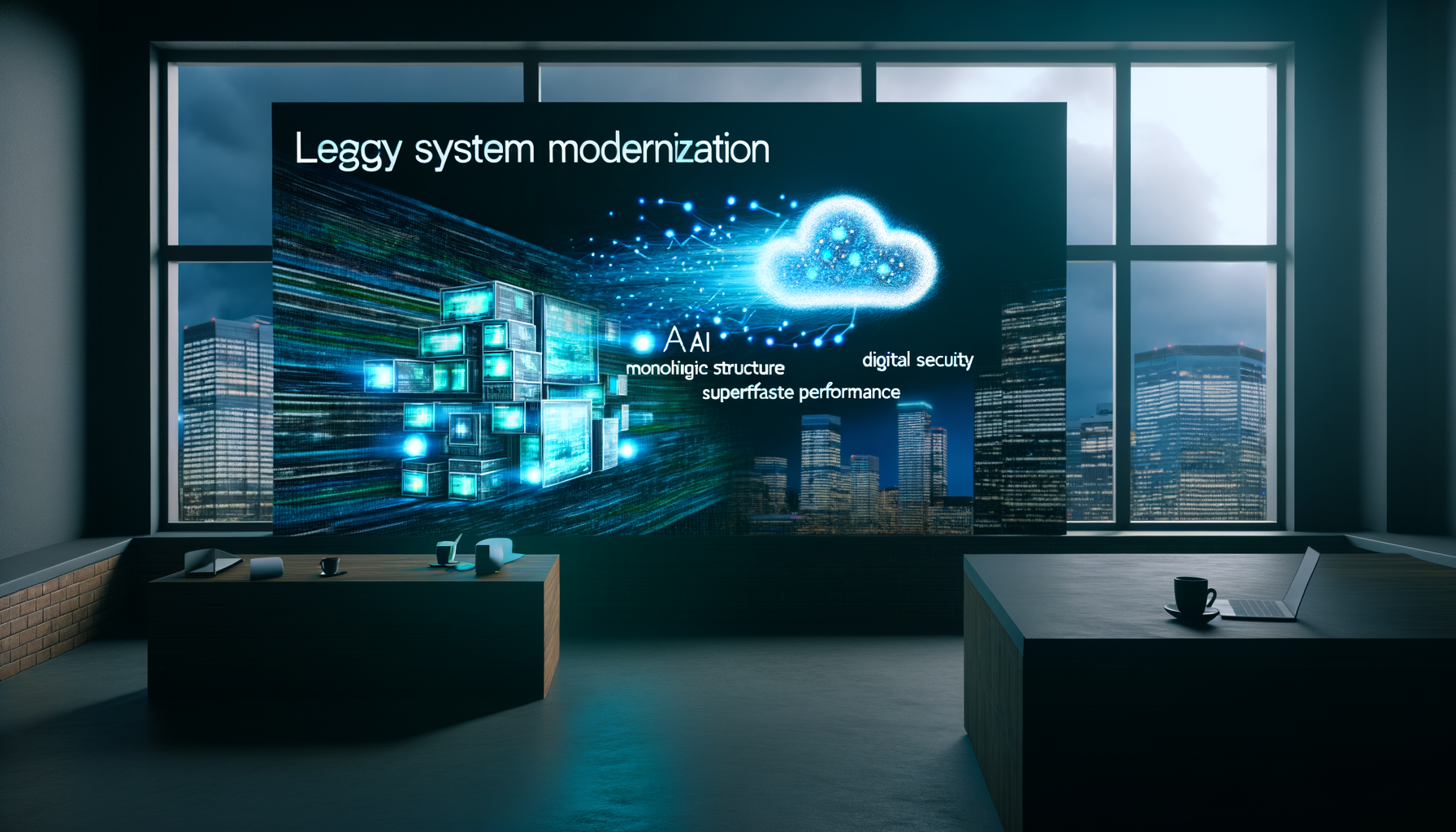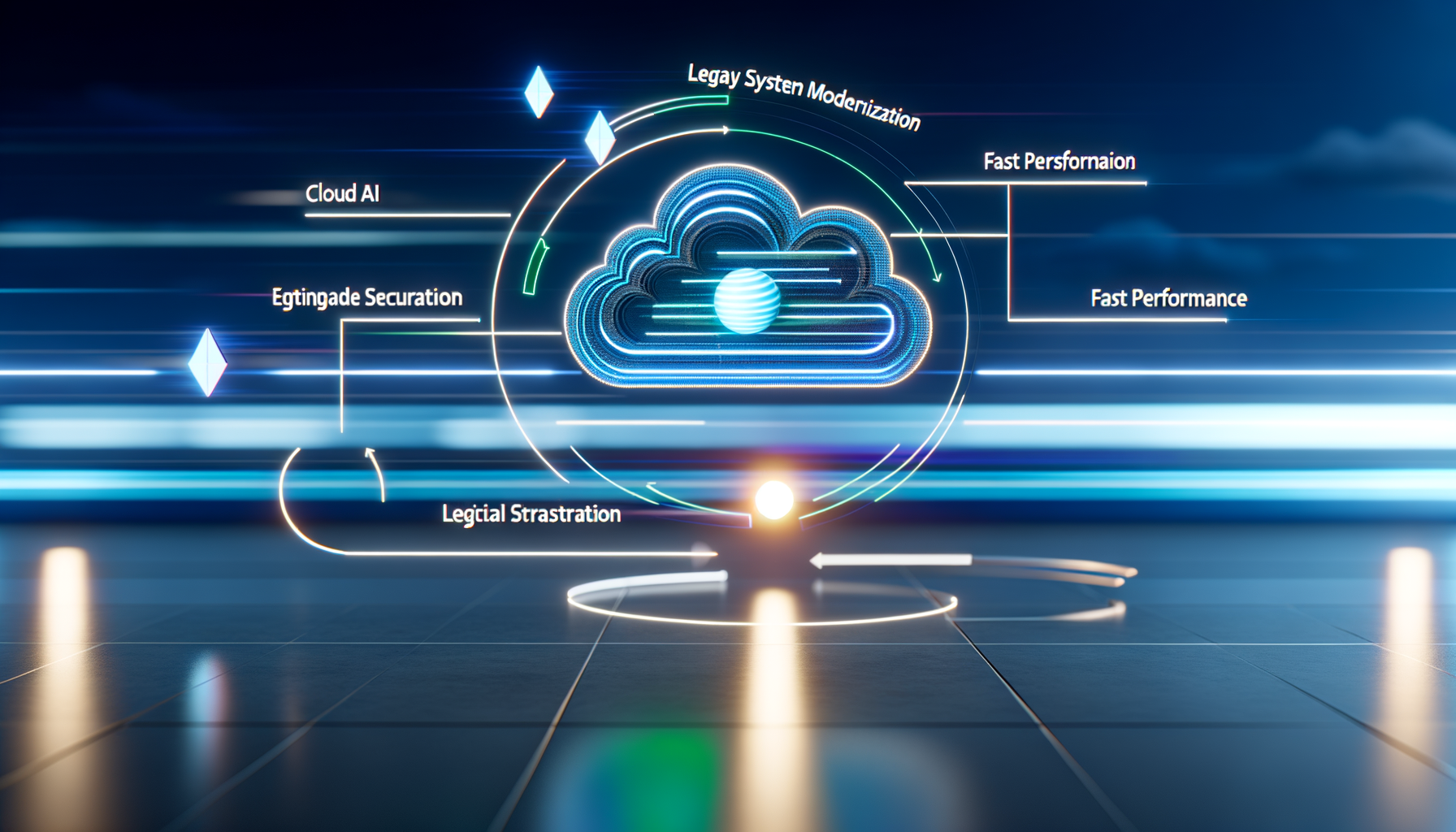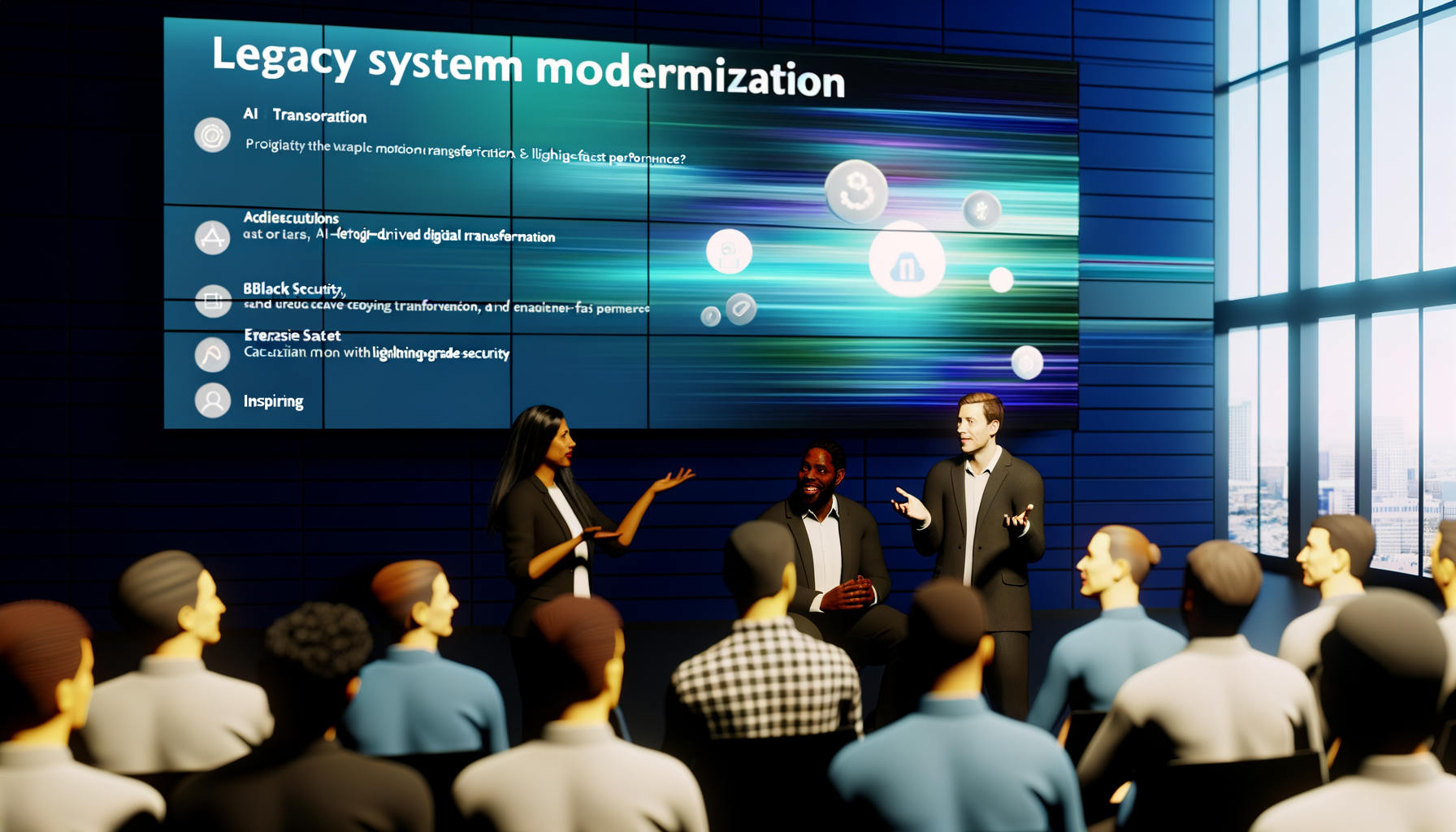Are your legacy systems holding your business back from reaching its full potential? With 90% of IT leaders confirming that modernizing legacy applications is a top priority for 2025, the time to act is now. This guide explores how you can transform outdated systems into agile, cloud-native architectures, leveraging AI to drive unprecedented efficiencies. Learn how to leap from technical debt to enterprise-level performance seamlessly.
Understanding Legacy System Challenges
Why Modernization Matters

Team collaborating over code review, discussing legacy system improvements.
Legacy systems often act as bottlenecks in an organization's digital transformation journey. These outdated infrastructures can lead to increased operational costs, security vulnerabilities, and limited scalability. In fact, a recent study showed that companies operating with legacy systems spend up to 75% of their IT budgets on maintaining outdated technology.
The pressing need for modernization is clear: businesses must evolve to stay competitive. Modern systems not only enhance performance but also offer a flexible platform for future growth and innovation.
By addressing these challenges, you set the stage for a smoother transition to agile, efficient, and scalable solutions that can drive your business forward.
CALLOUT
75% of IT budgets are spent on outdated technology. Modernize to save costs and reduce risks.
Modernization Frameworks Explored
From Monoliths to Microservices

Diagram illustrating monolith to microservices transition.
Transitioning from a monolithic system to a microservices architecture is a critical step in modernization. This approach breaks down applications into smaller, independent services, which can be developed, deployed, and scaled individually.
By adopting microservices, you'll improve agility and reduce time-to-market for new features. This framework also supports continuous integration and delivery, ensuring that you can deploy updates with minimal risk and without disrupting operations.
Quicklook specializes in guiding businesses through this transformation, offering expertise in custom applications that are both robust and flexible.
LIST
- •Improves agility
- •Supports continuous integration
- •Reduces time-to-market
Harnessing AI and Cloud-Native Technologies
Enhancing Legacy Systems

Cloud migration strategy diagram showcasing AI integration.
AI and machine learning are revolutionizing how businesses approach legacy modernization. These technologies can automate repetitive tasks, enhance security through predictive analytics, and optimize resource allocation.
Cloud-native architectures further complement AI by offering scalable, resilient platforms that support innovation. For example, Quicklook's cloud migration strategies enable seamless transitions to platforms that are equipped to handle fluctuating demands efficiently.
Together, AI and cloud-native solutions provide a powerful toolkit for transforming legacy systems into future-ready infrastructures.
QUOTE
"AI and cloud-native technologies are the cornerstones of a successful legacy modernization strategy."
Case Study: Success Story with Quicklook
A Real-World Transformation

Up-trending analytics graph depicting modernization success metrics.
Quicklook recently partnered with a mid-sized enterprise facing critical performance issues due to its aging IT infrastructure. By implementing a comprehensive modernization strategy, including AI-driven analytics and a shift to a microservices architecture, the company reduced its operational costs by 40% while boosting system performance by 60%.
This transformation enabled the client to launch new digital products and expand into new markets rapidly. With a secure, scalable, and efficient system in place, they are now positioned as industry leaders.
This success story exemplifies how Quicklook's expertise in AI integration and cloud strategies can transform legacy systems into high-performance assets.
LIST
- •Reduced costs by 40%
- •Improved performance by 60%
- •Enabled rapid market expansion
FAQs on Legacy Modernization

People discussing FAQs on legacy modernization at a tech conference.
Quicklook helps you navigate the complex landscape of legacy application modernization with ease.
Have questions? We've got answers to the most common concerns about transitioning to modern systems.
LIST
- •What are the key trends in legacy application modernization for 2025?
- •How can AI and machine learning enhance legacy system modernization?
- •What role does cloud-native architecture play in updating legacy applications?
Frequently Asked Questions
QWhat are the key trends in legacy application modernization for 2025?
QHow can AI and machine learning enhance legacy system modernization?
QWhat role does cloud-native architecture play in updating legacy applications?
Conclusion
Modernizing legacy systems transforms them from costly burdens into strategic assets that drive business growth. By adopting AI and cloud-native technologies, you can enhance efficiency, security, and scalability.
Future Vision
Embrace the future with a modernized IT infrastructure that positions your business as an innovator.
Schedule your AI audit with Quicklook.
